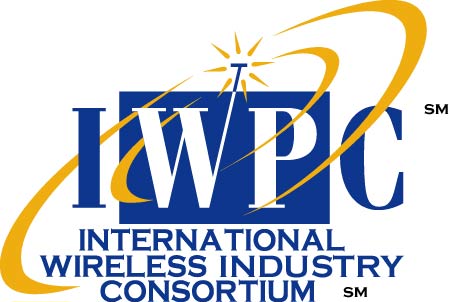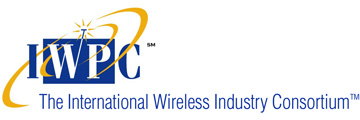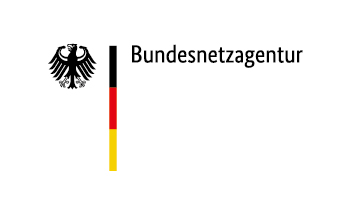Beyond MIMO Automotive Radars
Applications, limits and validation methods for automated driving - Novel applications for radar, Sensor fusion architectures, interfacing and connectivity.
Hosted by:
SOLD OUT
When
March 12-14, 2019
Introduction
Radar as a technology is a corner stone of modern Driver
Assistance features and an essential part of future
Level 4 systems.
Modern, state of the art production radar
concepts today often revolve around Digital Beamforming
and multi transmit-multi-receive architectures.
Many of these are based on the time multiplexing
of transmitters in a so called (temporal) MIMO
configuration.
However, there are emerging technologies that
adopt different solutions for the creation of the radar
antenna aperture (physically and algorithmically).
These new technologies also impact the supply
chain (new designs/requirements for RF chipsets,
processing), how Tier 1’s can utilize such technology in
the extraordinarily cost constrained automotive world
(robustness, integration challenges) and the OEM, who
may now have more choices to make within the context of
a sensor set on a vehicle.
Workshop Goals
- This Workshop is intended to provide a platform to share, educate and update the community on such emerging technologies and to contrast them with current in-production solutions.
Agenda
|
DAY 1 Tuesday 12:00-17:30 |
Registration -Tour & Demonstrations
Veoneer Germany GmbH, Harvey Barracks ConneKT GEB.536 97318 Kitzingen |
*Tour is limited to 60 persons on a first come, first served basis. Initial limit of 2 persons per company with others being added to Wait List.
11:00-Registration at Hotel, where times for the Demo's will be allocated. |
|
19:00 |
Registration & Evening Reception |
At Hotel |
|
DAY 2 Wednesday 07:00 |
Breakfast |
|
|
08:00 |
Welcome and Introductions
|
 |
|
08:30 |
Keynote
|
From Assistance (ADAS) to Creating Trust
VP of Research
|
|
09:00 |
Automotive OEM Perspectives
|
Beyond MIMO - How do we get more Detections?
Radar Engineer
|
|
10:30 |
Networking Break |
|
|
11:10 |
Automotive OEM Perspectives, continued
|
New Demands on Vehicular Radar Integration and Antenna Technology Requirements
Component Owner Radar Systems
Business Development Manager
|
|
12:00 |
Networking Lunch |
|
|
13:00 |
Automotive OEM Perspectives, continued |
Radar from ADAS to Autonomous Driving
Technical Expert, Radar Systems
140 GHz Band Allocation - Why does the Automotive Industry need a New Band?
Product Cost Engineering
|
|
14:20 |
Software and Hardware Innovation
|
Beyond MIMO: 5G Radar = Digital Modulation Radar
Product Line Director
Fellow, Senior Director of Customer and Application Engineering
|
|
15:00 |
Networking Break |
|
|
15:40 |
Enabling Technologies, Hardware Implementation
|
High Resolution mmWave Radar for Autonomous Driving
General Manager
Technology for Improved Automotive Radar Antennas
VP Product Development
Very Large MIMO Radars for Imaging
Principal Member of Technical Staff
Heating System Influence in Secondary Surface Radome Performance
Electromagnetics & Electronics Innovation Leader
|
|
17:40 |
End-of-Day Panel |
|
|
18:00 |
Adjourn |
|
|
19:00 |
Offsite Dinner at
https://www.hofkeller.de/hofkeller/weinkeller |
*Please gather in Lobby at 18:30. Bus will depart promptly at 18:45. |
|
DAY 3 March 14 Thursday 07:00 |
Breakfast |
|
08:00 |
Enabling Technologies, Sensor and Control Unit Connectivity and Interfaces
|
Optimized Imaging Radar Processing, Sensor Fusion and Data Collection Platform for Automotive Applications
Automotive Radar Business Manager
Imaging Radar: from Point-Cloud to Autonomous Driving
Head, Artificial Intelligence
Next Generation Automotive Radar Sensors
CTO
|
|
10:00 |
Networking Break |
|
10:40 |
Enabling Technologies, continued
|
Toward Automotive Surround-View Radars
Senior Director
Phase Error Calibration for MIMO in mmWave Radar
Radar Signal Processing, Research Laboratory
|
|
12:00 |
Networking Lunch |
|
|
13:00 |
Enabling Technologies, continued
|
79GHz SAR Radar
Product Director
Exploring Cascade Radar Systems
System VP
Fully Depleted SOI for Automotive Radar
Director Strategic Marketing
|
|
14:30 |
Spectrum Regulatory Environment
|
European Spectrum Regulatory Environment Regarding the Automotive Sector
Senior Policy Officer
|
|
15:00 |
Networking Break |
|
|
15:30 |
Test and Validation
|
High Fidelity Physics Simulation of Radar Sensors for Open and Closed-Loop Applications using Approaches for Real Time Simulation
Lead Application Engineer
Testing Radars for ADAS and Autonomous Driving
Director, Global Business Development
Opportunities and Challenges of Sensors in Autonomous Driving, and Methods of Verification
Technology Automotive R&D Planner
|
|
17:40 |
Closing Discussion |
|
18:15 |
Adjourn |
FAQs
- What is the deadline for presentation/handout materials?
- What can I do to prepare for speaking an at IWPC workshop?
- Who are the attendees?
- What are the costs/registrations fees?
- Hotel information?
- What are the travel options from the airport to the hotel?
- Are there any audiovisual requirements?
- Will business cards be collected?
- What is the dress code?
- How will handout materials be provided?
- What is the deadline for
presentation/handout materials?
Deadline for electronic version of presentation/handout materials: Friday, March 1, 2019
- What can I do to prepare for speaking an at IWPC workshop?
Click on the link below for a short video guide regarding preparing for and improving your IWPC presentation:
- Who are the attendees?
- We do not permit the Press.
- We do not permit Analysts.
- We do not permit Consultants.
- We do not permit 3rd party sales reps.
- We only permit "first hand knowledge experts" in business and technology issues, prepared to contribute to the discussion.
- What are the costs/registrations fees?
ALL Hosts, Speakers, Panel Members and Attendees will be asked to cover out-of-pocket workshop costs such as conference room costs, food (Social Reception plus First Day breakfast/lunch/dinner plus Second Day breakfast/lunch plus Breaks), audio/visual costs, etc.
These costs will be $1445 (USD) per person. (For IWPC Members only.)
ALL Hosts, Speakers, Panel Members and Attendees will be asked to pay this fee in advance with either Visa, MasterCard, American Express, cash, personal check or business check. Make checks payable to IWPC.
- Hotel information?
Maritim Hotel Wurzburg
Pleichertorstrasse 5
97090 Wuerzburg, Germany
Phone: +49 (0) 931 3053-850
Hotel WebsiteThe IWPC room block rate is 126,00€/night. The deadline for hotel reservations is Monday, February 18, 2019. After that date, rooms cannot be guaranteed at the IWPC rate. You can make your reservations at Book your group rate for IWPC Germany 2019.
- What are the travel options from the airport to the hotel?
https://www.maritim.com/en/hotels/germany/hotel-wuerzburg/maps-transportation
- Are there any audiovisual requirements?
A Computer Projector will be available for the speakers.
In addition, we audiotape all presentations and the interactive discussions. Post workshop, presentations are made available to IWPC Members on the IWPC WEB site, along with “recordings” of all presentations and panel sessions.
- Will business cards be collected?
Business cards will be collected at the door from all attendees. We will make copies of these cards, which will be available to all who provided a business card.
- What is the dress code?
Business casual suggested. No ties, please!
- How will handout materials be provided?
For ALL IWPC members:
All IWPC members are invited to submit materials to be included in the online workshop folder in the IWPC Research Library. This should NOT BE SALES MATERIALS. Rather, we suggest it contain technical information about your technology as it relates to the workshop topics.
For all companies who will be making a presentation at the Workshop:
You are invited to submit an advance copy of your presentation, complete with graphics and illustrations.
These materials will be included on the IWPC website Research Library.
Please submit these materials either by email, as a Word for Windows file, Power Point files or PDF files.
- Go to www.iwpc.org
- Click on IWPC Activities Tab
- Under Workshop: Exploring New 5G Deployment Opportunities and Scenarios
- Click on Submit Presentation Proposal. Complete the form and attach your presentation.
- Once we receive your presentation we will send an email confirmation.
AS BACKUP, PLEASE BRING AN ELECTRONIC COPY USB STICK WITH YOU!













